
In my quest to extend the gardening season by growing very early and very late blooming plants, I have begun growing “spring”-blooming* witch hazels. In 2017 I planted ‘Ripe Corn,’ ‘Orange Encore,’ and ‘Birgit’–all Hamamelis x intermedia (hybrids of H. japonica crossed with H. mollis). Only ‘Birgit’ is alive; the other two were eaten during the winter. Last year I planted ‘Pallida,’ ‘Diane,’ and H. vernalis. The vernal witch hazel, as H. vernalis is called, is native to southeastern United States and hardy to USDA Zone 4b. It opened a few blossoms in the most recent thaw.
I concede the shrub didn’t open more than two or three flowers before the next cold wave barreled through. It was a small but potent victory, nonetheless. The vernal witch hazel was in a substantial #3 pot, but ‘Diane’ and ‘Pallida’ were both mere one year old cuttings, so I’m surprised to see ‘Diane’ has flower buds, all five of them. (I’ll post pictures on Instagram and Facebook as soon as it blooms!)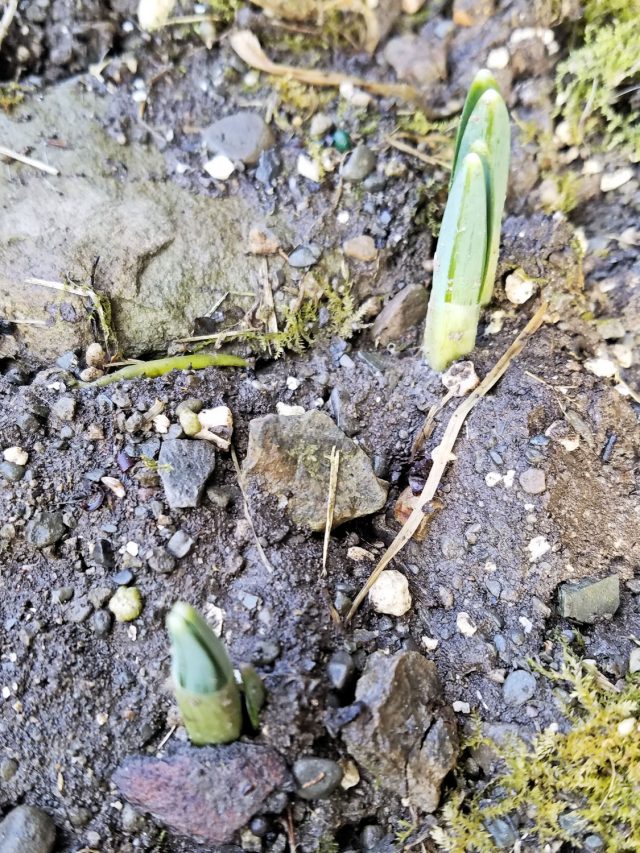
A few snowdrops (Galanthus spp.)were sighted in the Herb Garden and the wettest part of the Secret Garden.
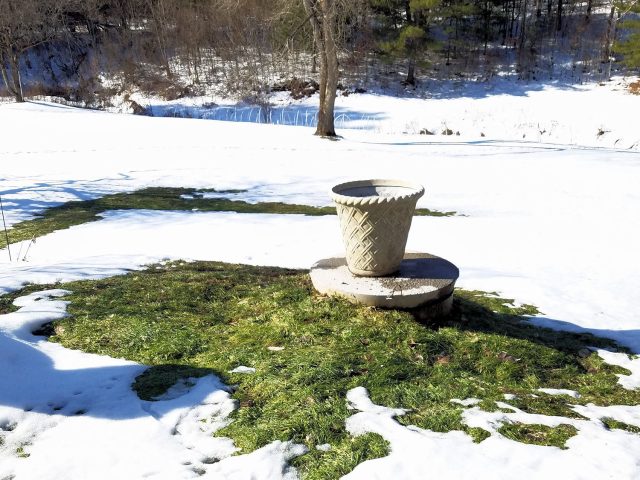
I have long admonished my readers to plant where the snow melts first, in this case, over the septic tank.
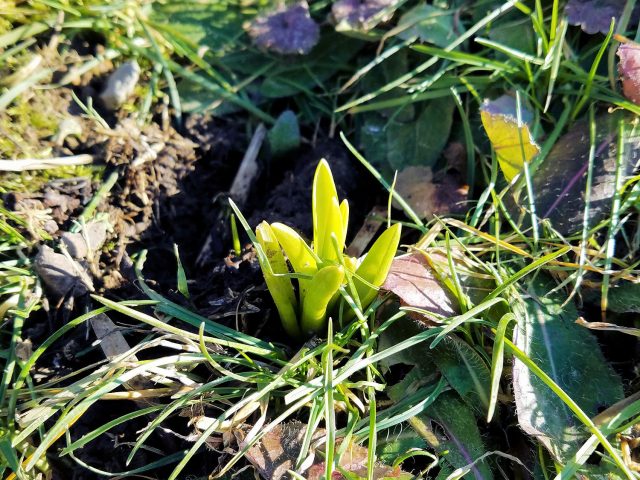
Several grape hyacinths from the mixes are poking up, along with a few other bulbs I couldn’t quite identify.
Meanwhile, inside the house . . .
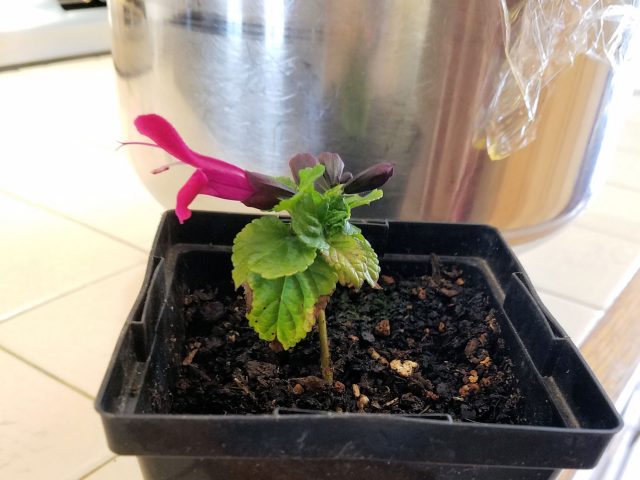
A trial plant from Proven Winners, this Rockin’ Fuchsia salvia cutting bloomed under the lights in my basement.
Challenging myself to learn more about plants by trying new techniques and by researching and growing unfamiliar plants helps me grow as a gardener–and as a person. I try not to get discouraged about the failures because even they teach me something. For example, the ‘Diane’ and ‘Pallida’ witch hazels are caged so they don’t meet the same fate as ‘Ripe Corn’ and ‘Orange Encore.’ It’s all about being a hardy soul and not letting winter get the best of me. What cabin-fever-fighting tricks do you have in your arsenal?
*About those “spring”-blooming witch hazels: They are spring-blooming only to distinguish them from the fall-blooming Hamamelis virginiana. Most people would call them winter-blooming, but that would confuse us cold climate gardeners. Mud-season-blooming is closer to the mark.
Inspired by the words of Elizabeth Lawrence, “We can have flowers nearly every month of the year,” Carol of May Dreams Gardens started Garden Bloggers Bloom Day. On the 15th of every month, garden bloggers from all over the world publish what is currently blooming in their gardens. Check it out at May Dreams Gardens.
from Cold Climate Gardening http://bit.ly/2TTwVqL
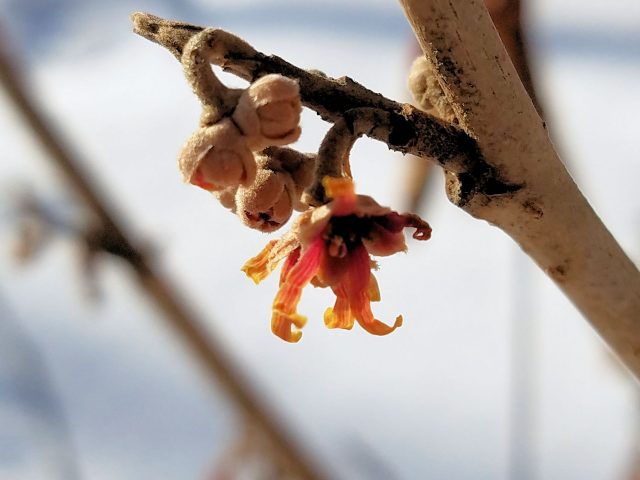


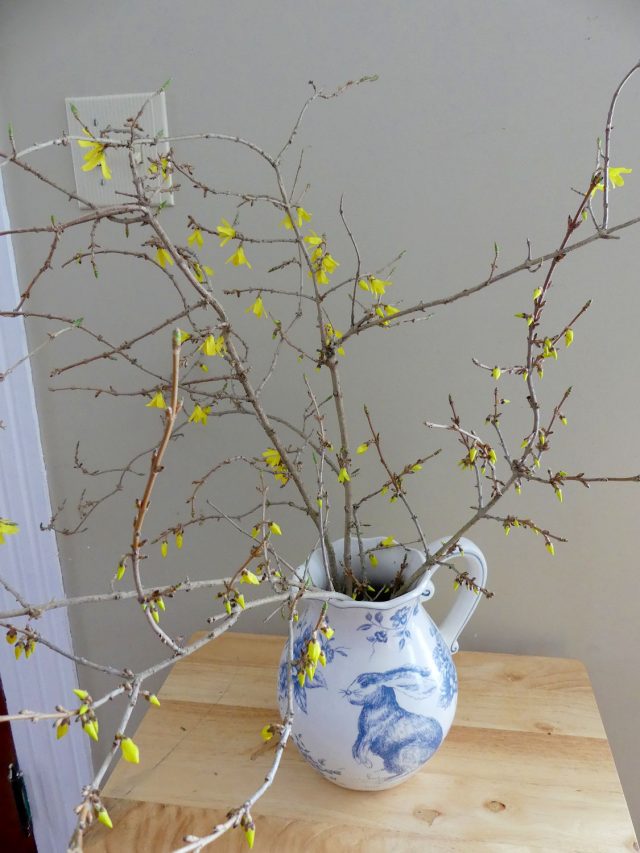

No comments:
Post a Comment